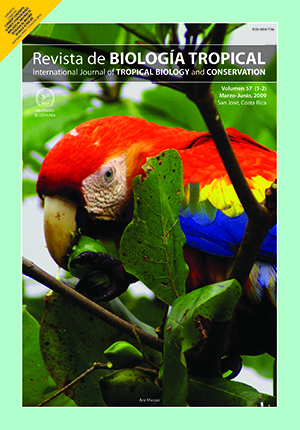Abstract
The immuno- suppressant effect of T. lewisi infection on the multiplication of T. gondii was compared in peritoneal (MP) and alveolar macrophages (MA) of white rat. Two animal groups were infected with T. lewisi and sacrificed after four days and seven days post infection. A group without infection was maintained as a control. The number of intracellular parasites (tachyzoites) (IT) was counted by light microscopy, calculating the rate infection rate per 100 total cells (TC) and per infected cells (IC) for each group of phagocyte cells. The relation quotient IT, TC or IC multiplied percent, provided a statistical ratio (RE) of the relative number of parasites in both cellular types for each time interval. MA as well as MP obtained after 4 days showed a significant increase in the multiplication of T. gondii with respect to the control. Unlike the MP (which had an increase in the multiplication of T. gondii the fourth day of infection with T. lewisi diminishing towards the seventh day), the MA had an increase in the multiplication of the parasite from the fourth to the seventh day. This difference can be related to the route of infection used for the experiments, that affect the MP directly with a greater effect in comparison with the MA of the lungs. Lung compartment will be affected later, when the infection becomes systemic between the fourth and sixth day of infection. The immunity against T. gondii is similar between both phagocytes, but the time of infection and the compartment where the cells are located, makes the difference in the response time against T. gondii. Supernatants from macrophage cultures or T. lewisi by rat did not induced any immunosuppression.##plugins.facebook.comentarios##

This work is licensed under a Creative Commons Attribution 4.0 International License.
Copyright (c) 2009 Revista de Biología Tropical
Downloads
Download data is not yet available.






